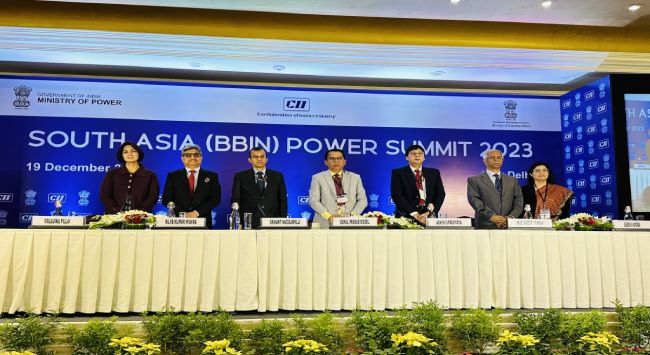Summary
South Asia is evolving. Old structures are giving way to new ones. It is time to make sub-regional co-operation platforms like BBIN (Bangladesh, Bhutan, India and Nepal) work. Can East South Asia lead the way?
Evolution of South Asia
South Asia is a geographical subregion encompassing Afghanistan, Bangladesh, Bhutan, India Maldives, Nepal, Pakistan and Sri Lanka. This grouping was formalised under the name of the South Asian Association for Regional Cooperation (SAARC) in 1985 with its headquarters inaugurated in Kathmandu, Nepal, in 1987. Initially comprising seven countries, Afghanistan was included in the grouping in 2007.
The first decade of the 21st century ushered heightened activities in South Asia. Milestones included the signing of the South Asian Free Trade Agreement in 2004, the inauguration of the SAARC Arbitration Council in 2007 and the establishment of key intuitions: the South Asian University in New Delhi in 2007, the SAARC Development Fund, headquartered in Thimphu in 2008 and the South Asian Regional Standard Organization in 2011. The bullish period initiated not only multiple regional collaborations but also discussions on a common currency ‘Rupa’.
Regional-focused institutions emerged and platforms like Himal Southasian have been instrumental in pushing forward the identity of South Asians, as highlighted in the World Bank’s recently published Good Neighbours compendium of case studies.
SAARC Stalls from 2014
SAARC had its historic moment when India’s Prime Minister Narendra Modi invited all the SAARC heads of states to attend his first inauguration. He first visited Bhutan followed by Nepal as part of his “Neighbourhood First” strategy. A sense of optimism raised expectations for the 18th SAARC summit in Nepal in November 2014. However, the summit turned out to be a dampener as it failed to sign the Motor Vehicle Agreement (MVA) due to Pakistan’s non-agreement. Subsequently, bilateral relations between India and Pakistan deteriorated.
India Pushes towards “The India Way”
After Modi was re-elected in 2019, India aimed to leverage its economic growth and development to project itself as a global power. Former Foreign Secretary S Jaishankar assumed the role of the technocrat external affairs minister, championing the vision of a new India as encapsulated in his book, The India Way. By not following the West in sanctioning Russia and opting to buy oil, even if it meant paying in Chinese Yuan, India sent a clear signal of putting its interests first. It pushed for multiple new alignments, ranging from the Quadrilateral Security Dialogue and I2U2 (India, Israel, United Arab Emirates and the United States) and reinforced the Bay of Bengal Initiative for Multi-Sectoral Technical and Economic Cooperation and maritime cooperation policies. India’s successful hosting of the G20 in September 2023 marked a sense of its arrival on the global stage.
Reimagining the Region
In a 2014 paper, I articulated the vision of East South Asia while building upon the vision of the Bangladesh, Bhutan, India and Nepal (BBIN) grouping. South Asia can be divided into three parts – West South Asia, consisting of Afghanistan, Pakistan and Western India, which is expected to see limited movement in years to come; South South Asia, comprising the southern Indian states, Sri Lanka and the Maldives, which can share a common agenda; and East South Asia, including Bangladesh, Bhutan, West Bengal and the north-eastern states of India, and Nepal (BBIN), which can leverage regional cooperation for improved movement of goods, services and people to benefit populations across these countries. Efforts are underway for the BBIN MVA and Multimodal Transport Agreement, albeit due considerations are in order to address Bhutan’s concern. The Asian Highway project by the Asian Development Bank is progressing forward and the day is not far when one can drive from Kathmandu or Dhaka to Vietnam. The trilateral energy agreements among Bangladesh, India and Nepal open the possibility of regional energy markets.
Bilateral relations among the BBIN countries have seen notable improvements. Bangladesh, under the leadership of Prime Minister Sheikh Hasina for the past 15 years, has been working closely with India. The return of former prime minister Tshering Tobgay to power in Bhutan will ensure the advancement of the large-scale project, Mindfulness City of Gelephu, in eastern Bhutan, in collaboration with India. Jaishankar’s visit to Nepal in early January 2024 has kickstarted official dialogues. Prashant Jha, Global Editor of Hindustan Times, opines that a new playbook is in place.
The world is now entering the era of ‘reglobalisation’ that embraces innovative restructuring of economic cooperation and expansion of economic integration to be inclusive of more people. This term that forms the reimagination of globalisation in the World Trade Organization Report 2023 has also been echoed by Jaishankar.
Moving forward, firstly, the onus is on the three countries to urge India forward on the BBIN agenda, recognising New Delhi’s numerous commitments and that other nations are also vying for its attention. Secondly, India needs to realise the importance of integrating its north-eastern states into the larger national growth story and the potential of BBIN serving as a catalyst to this endeavour. Finally, to firmly establish its global leadership in the South, India must ensure the success of BBIN as a pilot case that will signal its capability to manage and reimagine economic blocs.
. . . . .
Mr Sujeev Shakya is the Founder Chair of the Nepal Economic Forum and a Non-Resident Senior Fellow at the Institute of South Asian Studies (ISAS), an autonomous research institute at the National University of Singapore (NUS). He can be contacted at sujeev.shakya@beed.com.np. The author bears full responsibility for the facts cited and opinions expressed in this paper.
Pic Credit: @DrShankarSharma Twitter account
-
 More From :
More From :
-
 Tags :
Tags :
-
 Download PDF
Download PDF


